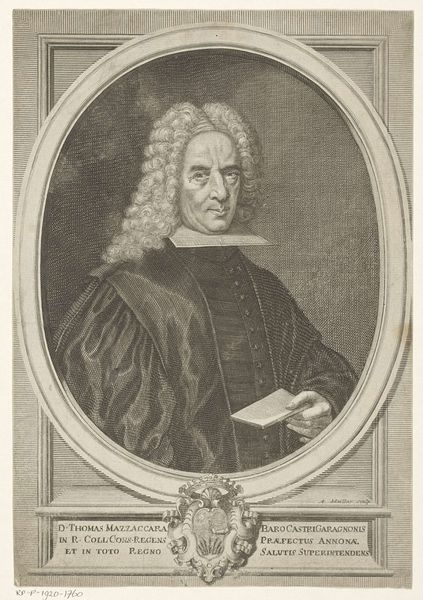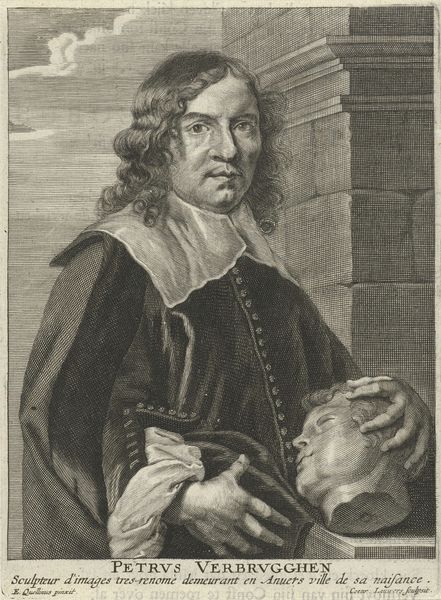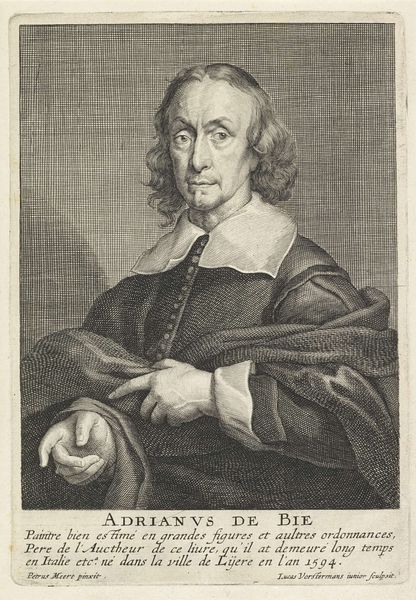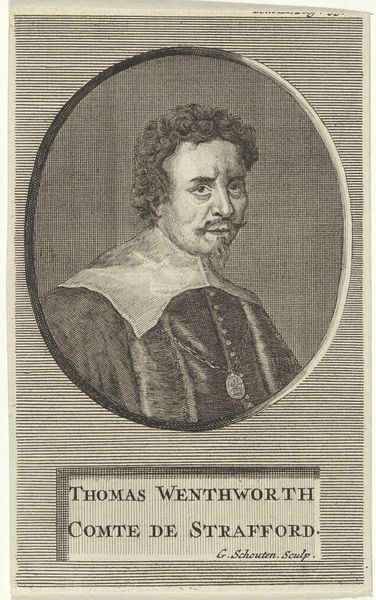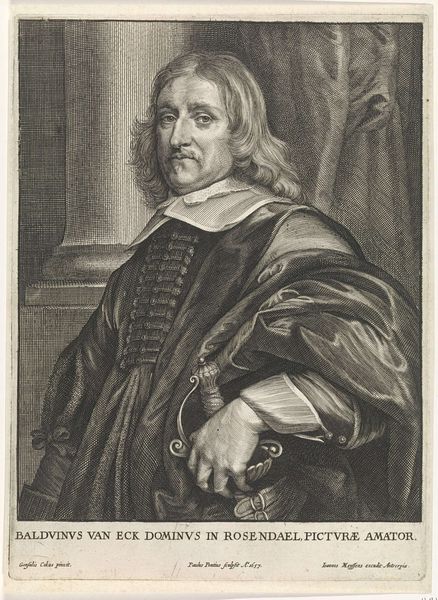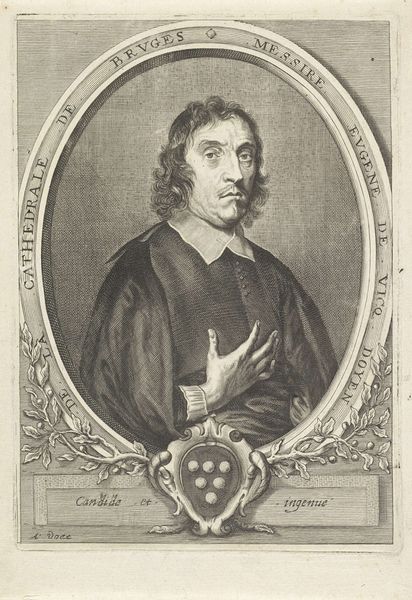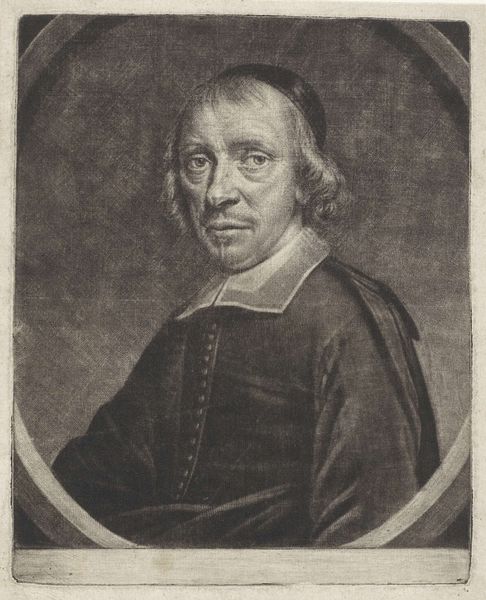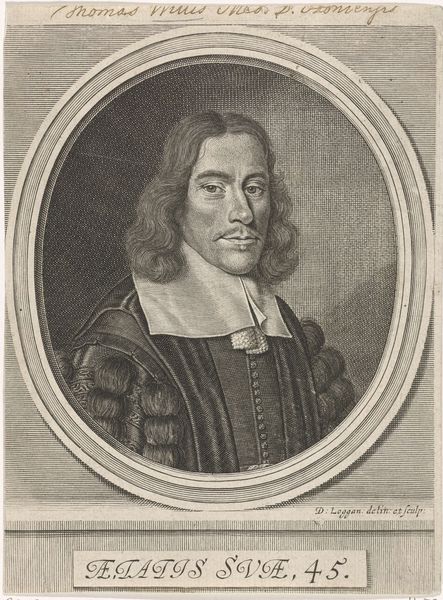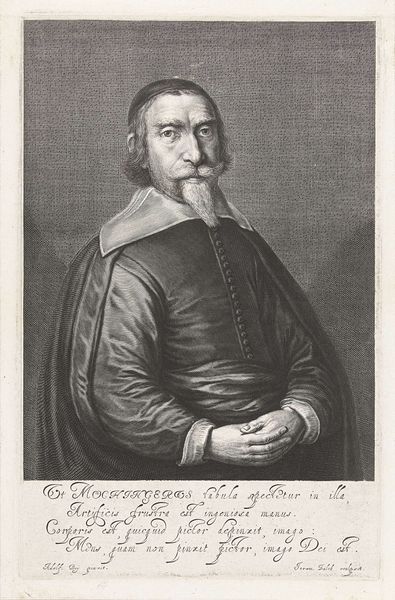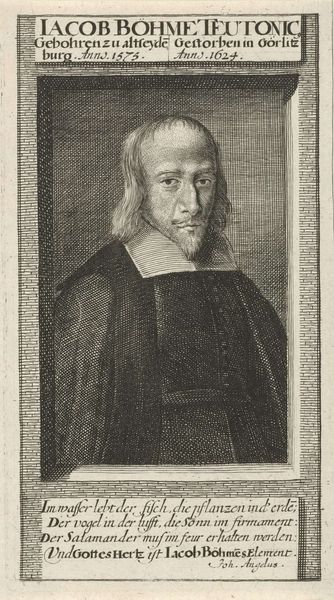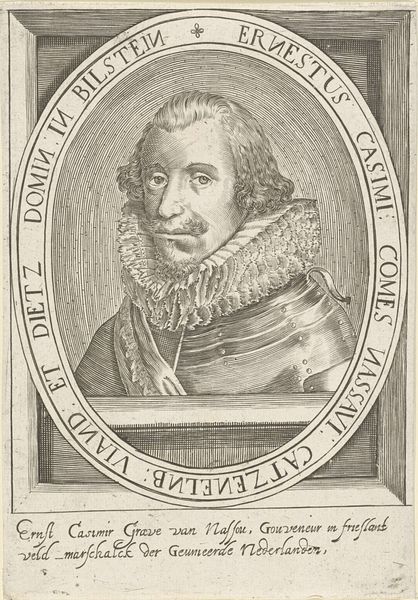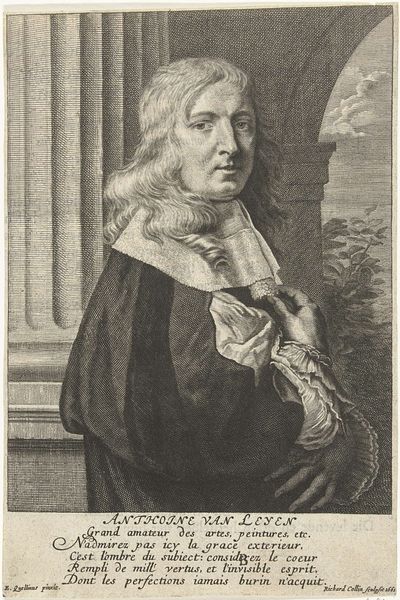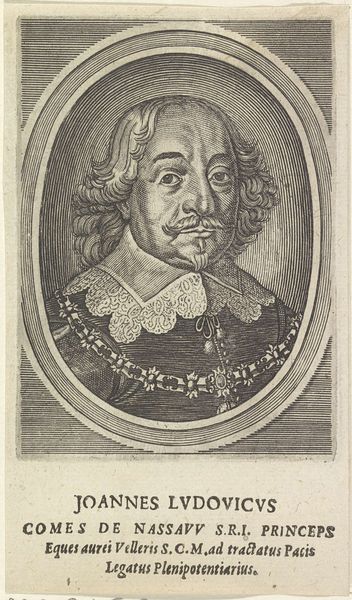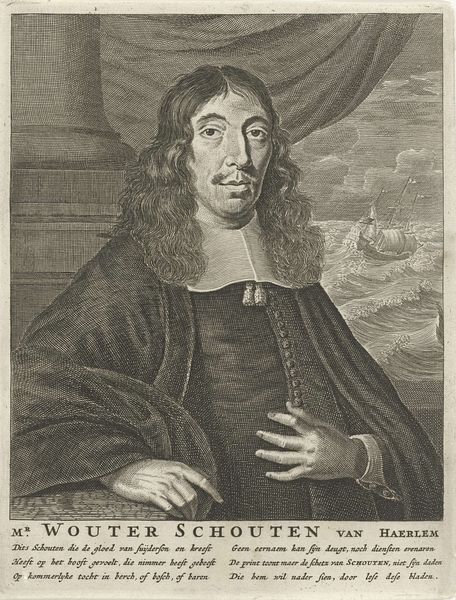
Portret van de architect Jacob Vennekool met een ontwerp voor het stadhuis op de Dam c. 1648 - 1665
0:00
0:00
print, engraving
#
portrait
#
baroque
#
dutch-golden-age
# print
#
portrait reference
#
portrait drawing
#
history-painting
#
engraving
Dimensions: height 286 mm, width 200 mm
Copyright: Rijks Museum: Open Domain
Editor: Here we have "Portrait of the Architect Jacob Vennekool with a Design for the Town Hall on the Dam," an engraving by Salomon Savery, made sometime between 1648 and 1665. The architect is depicted with his tools, poised over his plans, with a solemn look on his face. It is visually quite complex, using very precise lines to give dimension and shadow. What strikes you about this portrait? Curator: Focusing solely on the internal dynamics of this piece, one is drawn to the tension between the precision of the lines and the apparent dynamism achieved through the folds of fabric and the gesture of the subject. Notice the interplay of textures: the smoothness of his face juxtaposed with the intricate lace collar and the complex layering of the robe. Do you observe how Savery uses line weight to differentiate the foreground elements – Vennekool and his design – from the background, thus creating a distinct sense of depth? Editor: Yes, the way he renders the different textures is incredible. How do you feel about the textual part in this print? Do you think that it serves to underscore, or to contrast with, the picture? Curator: The presence of the text serves as both frame and explication. It functions semiotically by further encoding the portrait with layers of meaning beyond pure visual representation. By offering eulogy, it elevates the subject beyond the merely representational towards a symbolic function of cultural memory. This textual addition affects how we 'read' the overall structure of the piece. How do you respond to that semiotic relationship between word and image here? Editor: That makes me think about how much more information is packed into this print. It is more than just an image, but a memory too. Curator: Precisely. It reveals how meaning arises not simply from the image, but from the structured relations between its elements. Hopefully, you’ve found this exercise in formal analysis enlightening! Editor: Yes, thank you, I did. I see the engraving in a completely different light now.
Comments
No comments
Be the first to comment and join the conversation on the ultimate creative platform.
